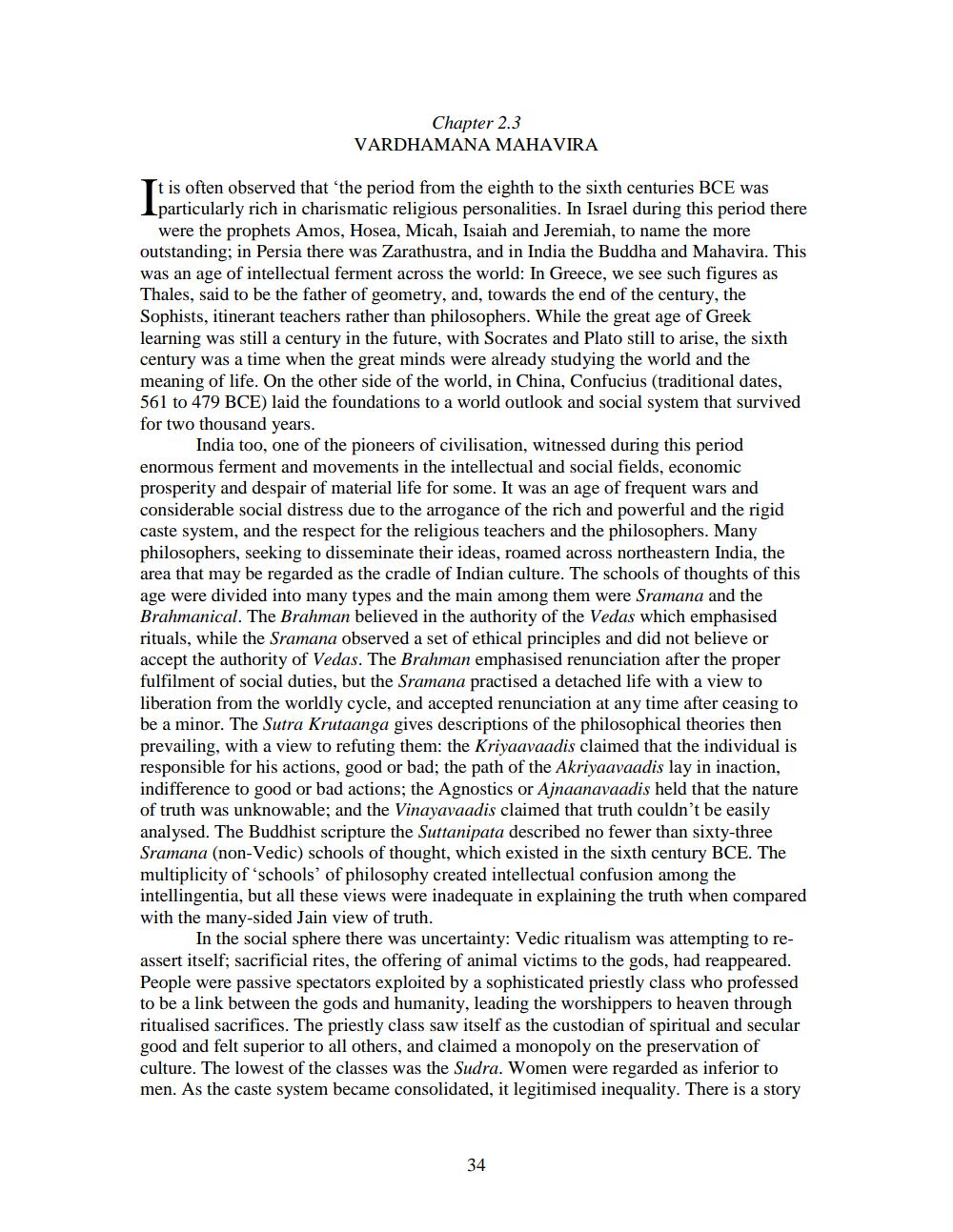________________
Chapter 2.3 VARDHAMANA MAHAVIRA
It is often observed that the period from the eighth to the sixth centuries BCE was I particularly rich in charismatic religious personalities. In Israel during this period there
were the prophets Amos, Hosea, Micah, Isaiah and Jeremiah, to name the more outstanding; in Persia there was Zarathustra, and in India the Buddha and Mahavira. This was an age of intellectual ferment across the world: In Greece, we see such figures as Thales, said to be the father of geometry, and, towards the end of the century, the Sophists, itinerant teachers rather than philosophers. While the great age of Greek learning was still a century in the future, with Socrates and Plato still to arise, the sixth century was a time when the great minds were already studying the world and the meaning of life. On the other side of the world, in China, Confucius (traditional dates, 561 to 479 BCE) laid the foundations to a world outlook and social system that survived for two thousand years.
India too, one of the pioneers of civilisation, witnessed during this period enormous ferment and movements in the intellectual and social fields, economic prosperity and despair of material life for some. It was an age of frequent wars and considerable social distress due to the arrogance of the rich and powerful and the rigid caste system, and the respect for the religious teachers and the philosophers. Many philosophers, seeking to disseminate their ideas, roamed across northeastern India, the area that may be regarded as the cradle of Indian culture. The schools of thoughts of this age were divided into many types and the main among them were Sramana and the Brahmanical. The Brahman believed in the authority of the Vedas which emphasised rituals, while the Sramana observed a set of ethical principles and did not believe or accept the authority of Vedas. The Brahman emphasised renunciation after the proper fulfilment of social duties, but the Sramana practised a detached life with a view to liberation from the worldly cycle, and accepted renunciation at any time after ceasing to be a minor. The Sutra Krutaanga gives descriptions of the philosophical theories then prevailing, with a view to refuting them: the Kriyaavaadis claimed that the individual is responsible for his actions, good or bad; the path of the Akriyaavaadis lay in inaction, indifference to good or bad actions; the Agnostics or Ajnaanavaadis held that the nature of truth was unknowable, and the Vinayavaadis claimed that truth couldn't be easily analysed. The Buddhist scripture the Suttanipata described no fewer than sixty-three Sramana (non-Vedic schools of thought, which existed in the sixth century BCE. The multiplicity of schools of philosophy created intellectual confusion among the intellingentia, but all these views were inadequate in explaining the truth when compared with the many-sided Jain view of truth.
In the social sphere there was uncertainty: Vedic ritualism was attempting to reassert itself; sacrificial rites, the offering of animal victims to the gods, had reappeared. People were passive spectators exploited by a sophisticated priestly class who professed to be a link between the gods and humanity, leading the worshippers to heaven through ritualised sacrifices. The priestly class saw itself as the custodian of spiritual and secular good and felt superior to all others, and claimed a monopoly on the preservation of culture. The lowest of the classes was the Sudra. Women were regarded as inferior to men. As the caste system became consolidated, it legitimised inequality. There is a story




